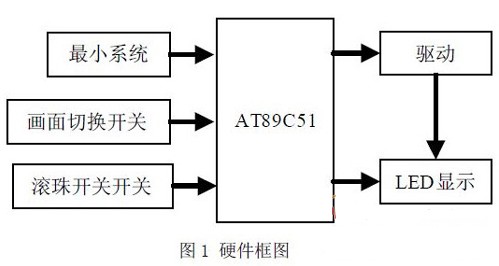0. Introduction
With the rapid advancement of modern technology, high-tech products have become an essential part of daily life due to their compact size and ease of use. The "shake stick" offers a fresh and innovative way to transmit information through simple physical motion, making it ideal for social gatherings and large entertainment events. This device not only brings convenience but also adds a fun and interactive element to communication.
This article presents a detailed study on the design and development of an electronic device known as the "shake stick." It utilizes 16 pre-programmed sequences to control 16 LEDs, displaying text and basic graphics based on the movement of the user's left and right hands. The system is built around the AT89C51 microcontroller, which manages the LED array. A ball switch detects the shaking motion, and the microcontroller adjusts the refresh rate of the LEDs accordingly. By leveraging the human eye’s visual persistence, the device creates the illusion of continuous motion, effectively conveying visual messages through movement.
1. Hardware System Composition
The LED shake stick is a compact and engaging electronic device that relies on a single-chip microcontroller for operation. It features buttons for screen navigation and ghosting control, ensuring clear and stable display. The system consists of three main components: the microcontroller unit (MCU), the LED driver section, and the LED display module. The hardware block diagram is illustrated in Figure 1.

1.1 Button Module
The device uses a button switch to change the displayed content. When the shake stick is tilted to one side, a ball switch activates the display of specific information. If the device is not properly shaken, ghosting or mirror images may appear. Mercury switches offer better stability but are less safe, while ball switches are more durable and safer. Considering real-world usage, ball switches were chosen for this design, with software adjustments compensating for minor instability. A manual reset button is also included to start and stop the system.
1.2 Control Section
The MCU serves as the central control unit, managing the brightness and display of the LEDs. The display effect is controlled through software programming and external interrupts, allowing for dynamic and responsive visual output.
1.3 LED Display Module
The LED display module operates based on the principle of an LED dot matrix. Two scanning methods—row and column—are used to generate images. In this design, the shake stick is treated like a single column of an LED matrix. To ensure clarity, 16 high-brightness LEDs are arranged in a straight line, forming a 16-row by 1-column grid. Data is transmitted using column scanning techniques. When the device is shaken, the human eye perceives the moving LED column as a continuous image due to visual persistence. As long as the shaking speed exceeds the threshold of visual retention, the pattern remains visible, creating a smooth and dynamic visual experience.


Mmcx Connector,Mmcx Pcb Mount Connector,Mmcx Male Coxial Connector,Coaxial Pcb Mount Connector
Changzhou Kingsun New Energy Technology Co., Ltd. , https://www.aioconn.com